Results 2,611 to 2,620 of 12094
Thread: Anandtech News
-
01-29-13, 11:30 AM #2611
Anandtech: HP Leaks Their First Chromebook

Google's venture into the desktop operating system space has been getting a lot of the right kind of attention lately. Acer's C7 Chromebook has been well received, as has the latest Samsung Chromebook. Google announced that their security competition, Pwnium, would be focused on Chrome OS. And now HP has let slip that they'll be building a Chromebook of their own. Tagged the HP Pavilion Chromebook, the 14-inch screen provides more screen than Chrome OS has seen on a laptop before, but the same 1366x768 resolution limits the value of that real estate. The internals will look familiar; it has the same Intel Celeron 847, and 2GB of RAM, as Acer's C7. The HP model comes with a 16GB solid state drive, in lieu of the Acer's mechanical drive. The 37WHr battery reportedly offers a modest 4 hours and 15 minutes of longevity, similar to the Acer C7. So, once again, not a road warrior, but enough perhaps to serve a lightweight user's needs. 
When and how much? The original leak's been pulled, but it looks like the HP Chromebook will premier on February 17th for $329.99. That MSRP puts it above the Acer that it resembles, but for those that like the idea of a larger keyboard and screen the increase could be worth the added cost. We'll be interested to find out how it does. 

More...
-
01-29-13, 04:30 PM #2612
Anandtech: AMD Catalyst 13.2 Beta 3 Drivers Released
As promised alongside last week’s release of the Catalyst 13.1 WHQL drivers, AMD has shipped out the first public beta for the next version of their drivers this week, Catalyst 13.2 Beta 3.
The latest beta makes a couple of additions that will be of particular interest to hardcore gamers. On the application support side, like NVIDIA’s beta release yesterday these are the first drivers that specifically target Crysis 3, itself having just been released in beta form as a multiplayer beta. AMD is citing up to a 15% performance improvement here in scenarios with high degrees of MSAA, while promising further improvements as the game and the drivers both march towards a final state.
Meanwhile these drivers are also the first driver set from AMD to address some of the frame latency issues Tech Report’s Scott Wasson has turned up over the last couple of months. His own testing of an earlier version of these drivers found that frame latency was significantly reduced in a few different games he tested, including Skyrim, Boderlands 2, and Guild Wars 2.
As always, these latest drivers are available directly from AMD’s site.

More...
-
01-29-13, 06:00 PM #2613
Anandtech: Slightly Smaller Apple TV 3,2 (A1469) Contains A5X SoC, BCM4334 Combo
Yesterday along with iOS 6.1 being pushed to iPhones, iPads, and iPod Touches, Apple released an update to the Apple TV 2,1 and 3,1, and curiously enough released another image for an unannounced Apple TV 3,2 product with model A1469. Originally it was assumed this was an international release with minimal changes, however it turns out there's much more inside, including an A5X SoC and BCM4334 (up from BCM4330) WLAN and BT. 
Matthew Panzarino from The Next Web pinged me about the FCC documents posting and whether there were any changes inside, which piqued my interested and made me dig a little deeper. First, the Apple TV 3,2 model is slightly smaller, as noted by Engadget. Inside however from what we can glean from the FCC documents there's no longer a two antenna solution for the BCM4330 WiFi+BT combo, but rather a single antenna solution with different gain and utilizing a BCM4334 combo instead. This is the same WLAN+BT combo as used in the iPhone 5 and basically all of the newly refreshed iDevices, and is built on a 40nm RF CMOS process. Since the previous antennas were a part of the Apple TV PCB, and the FCC disclosure notes that the new Apple TV uses a single PIFA (Planar Inverted F Antenna), it's highly likely we're looking at a completely different PCB. 
That fact intrigued me and made me take a look inside the Apple TV 3,2 IPSW, which contained exactly what I was looking for. Instead of the A5R2 SoC (S5L8942) inside the Apple TV 3,1, this new device contains an A5X SoC (S5L8947) as shown in the screenshots I've taken of the Restore.plist file, though there are numerous others. It's entirely possible that Apple is again using different bins of the A5X, it's not possible to tell whether CPU or GPU cores are fused off at this point from my digging through the IPSW.
This is an interesting silent update and development for the Apple TV. Given the IPSW release onto the web before an actual hardware announcement, I originally suspected this was a silent upgrade of the Apple TV platform to newer hardware, however the presence of an A5X SoC inside makes things a bit more curious. Hopefully we will see an official announcement in the next few days. 
Source: TNW, Engadget, FCC
Gallery: Slightly Smaller Apple TV 3,2 (A1469) Contains A5X SoC, BCM4334 Combo



More...
-
01-29-13, 09:00 PM #2614
Anandtech: Updating AnandTech’s 2013 Mobile Benchmark Suite (RFC)
If it seems like just last year that we updated our mobile benchmark suite, that’s because it was. We’re going to be keeping some elements of the testing, but with the release of Windows 8 We’re looking to adjust other areas. This is also a request for input (RFC = Request for Comments if you didn’t know) from our readers on benchmarks they would like us to run—or not run—specifically with regards to laptops and notebooks.
We used most of the following tests with the Acer S7 review, but we’re still early enough in the game that we can change things up if needed. We can’t promise we’ll use every requested benchmark, in part because there’s only so much time you can spend benchmarking before you’re basically generating similar data points with different applications, and also because ease of benchmarking and repeatability are major factors, but if you have any specific recommendations or requests we’ll definitely look at them.
General Performance Benchmarks
We’re going to be keeping most of the same general performance benchmarks as last year. PCMark 7, despite some question as to how useful the results really are, is at least a general performance suite that’s easy to run. (As as side note, SYSmark 2012 basically requires a fresh OS install to run properly, plus wiping and reinstalling the OS after running, which makes it prohibitively time consuming for laptop testing where every unit comes with varying degrees of customization to the OS that may or may not allow SYSmark to run.) We’re dropping PCMark Vantage this year, mostly because it’s redundant; if Futuremark comes out with a new version of PCMark, we’ll likely add that as well.
At least for the near term, we’re also including results for TouchXPRT from Principled Technologies; this is a “light” benchmark suite designed more for tablets than laptops (at least in our opinion), but it does provide a few other results separate from a monolithic suite like PCMark 7. We’ll also include results from WebXPRT for the time being, though again it seems more tablet-centric. We don’t really have any other good general performance benchmarking suites, so for other general performance benchmarks we’ll return once again to the ubiquitous Cinebench 11.5 and x264 HD. We’re updating to x264 HD 5.x, however, which does change the encoding somewhat, and if a version of x264 comes out with updated encoding support (e.g. for CUDA, OpenCL, and/or Quick Sync) we’ll likely switch to that when appropriate. We’re still looking for a good OpenCL benchmark or two; WinZip sort of qualifies, but unfortunately we’ve found in testing that 7-zip tends to beat it on file size, compression time, or both depending on the settings and files we use.
On the graphics side of the equation, there doesn’t seem to be a need to benchmark every single laptop on our gaming suite—how many times do we need to see how an Ultrabook with the same CPU and iGPU runs (or doesn’t run) games?—so we’ll continue using 3DMark as a “rough estimate” of graphics performance. As with PCMark, we’re dropping the Vantage version, but we’ll continue to use 3DMark06 and 3DMark 11, and we’ll add the new version “when it’s done”. We’re considering the inclusion of another 3D benchmark, CatZilla (aka AllBenchmark 1.0 Beta19), at the “Cat” and “Tiger” settings, but we’d like to hear feedback on whether it makes sense or not.
Finally, we’ll continue to provide analysis of display quality, and this is something we really hope to see improve in 2013. Apple has thrown down the gauntlet with their pre-calibrated MacBook, iPhone, iPad, and iMac offerings; if anyone comes out with a laptop that charges Apple prices but can’t actually match Apple on areas like the display, touchpad, and overall quality, you can bet we’ll call them to the carpet. Either be better than Apple and charge the same, or match Apple and charge less, or charge a lot less and don’t try to compete with Apple (which is a dead-end race to the bottom, so let’s try to at least have a few laptops that eschew this path).
Battery Benchmarks
As detailed in the Acer S7 review, we’re now ramping up the “difficulty” of our battery life testing. The short story is that we feel anything less than our previous Internet surfing test is too light to truly represent how people use their laptops, so we’re making that our Light test. For the Medium test, we’ll be increasing the frequency of page loads on our Internet test (from every 60 seconds down to every 12 seconds) and adding in playback of MP3 files. The Heavy test is designed not as a “worst-case battery life” test but rather as a “reasonable but still strenuous” use case for battery power, and we use the same Internet test as in the Medium test but add in looped playback of a 12Mbps 1080p H.264 video with a constant FTP download from a local server running at ~8Mbps (FileZilla Server with two simultaneous downloads and a cap of 500KBps, downloading a list of large movie files).
Other aspects of our battery testing also warrant clarification. For one, we continue to disable certain “advanced” features like Intel’s Display Power Saving Technology (which can adjust contrast, brightness, color depth, and other items in order to reduce power use). The idea seems nice, but it basically sacrifices image quality for battery life, and since other graphics solutions are not using these “tricks” we’re leaving it enabled. We also disable refresh rate switching, for similar reasons—testing 40Hz on some laptops and 60Hz on others isn’t really apples-to-apples. Finally, we’re also moving from 100 nits brightness to 200 nits brightness for all the battery life testing, and the WiFi and audio will remain active (volume at 30% with headphones connected).
Gaming Benchmarks
In truth, this is the one area where there is the most room for debate. Keep in mind that when testing notebooks, we’re not solely focused on GPU performance most of the time (even with gaming notebooks); the gaming tests are only a subset of all the benchmarks we run. We’ll try to overlap with our desktop GPU testing where possible, but we’ll continue to use 1366x768 ~Medium as our Value setting, 1600x900 ~High as our Mainstream setting, and 1920x1080 ~Max for our Enthusiast setting. Beyond the settings however is the question of which games to include.
Ideally, we’d like to have popular games that also tend to be strenuous on the graphics (and possibly the CPU as well). A game or benchmark that is extremely demanding of your graphics hardware that few people actually play isn’t relevant, and likewise a game that’s extremely popular but that doesn’t require much from your hardware (e.g. Minecraft) is only useful for testing low-end GPUs. We would also like to include representatives of all the major genres—first person shooter/action, role-playing, strategy, and simulation—with the end goal of having ten or fewer titles (and for laptops eight seems like a good number). Ease of benchmarking is also a factor; we can run FRAPS on any game, but ideally a game with a built-in benchmark is both easier to test and produces more reliable/repeatable results. Frankly, at this point we don’t have all that many titles that we’re really set on including, but here’s the short list.
Elder Scrolls: Skyrim: We’ve been using this title since it came out, and while it may not be the most demanding game out there, it is popular and it’s also more demanding (and scalable) than most other RPGs that come to mind. For example, Mass Effect 3 generally has lower quality (also DX9-only) graphics and doesn’t require as much from your hardware, and The Witcher 2 has three settings: High, Very High, and Extreme (not really, but it doesn’t scale well to lower performance hardware). Skyrim tends to hit both the CPU and GPU quite hard, and even with the high resolution texture pack it can still end up CPU limited on some mobile chips. Regardless of our concerns, however, we can’t think of a good RPG replacement, so our intention is to keep Skyrim for another year.
Far Cry 3: This is an AMD-promoted title, which basically means they committed some resources to helping with the games development and/or advertising. In theory, that means it should run better on AMD hardware, but as we’ve seen in the past that’s not always the case. This is a first-person shooter that has received good reviews and it’s a sequel to a popular franchise with a reputation for punishing GPUs, making it a good choice. It doesn’t have a built-in benchmark, so we’ll use FRAPS on this one.
Sleeping Dogs: This is another AMD-promoted title. This is a sandbox shooter/action game with a built-in benchmark, making it a good choice. Yes, right now that's two for AMD and none for NVIDIA, but that will likely change with the final list.
Sadly, that’s all we’re willing to commit to at this point, as all of the other games under consideration have concerns. MMORPGs tend to be a bit too variable, depending on server load and other aspects, so we’re leaving out games like Guild Wars 2, Rift, etc. For simulation/racing games, DiRT: Showdown feels like a step back from DiRT 3 and even DiRT 2; the graphics are more demanding, yes, but the game just isn’t that fun (IMO and according to most reviews). That means we’re still in search of a good racing game; Need for Speed Most Wanted is a possibility, but we’re open for other suggestions.
Other titles we’re considering but not committed to include Assassin’s Creed III, Hitman: Absolution, and DmC: Devil May Cry; if you have any strong feelings for or against the use of those titles, let us know. Crysis 3 will hopefully make the grade this time, as long as there's no funny business at launch or with the updates (e.g. no DX11 initially, and then when it was added the tessellation was so extreme that it heavily favored NVIDIA hardware, even though much of the tessellation was being done on flat surfaces). Finally, we’re also looking for a viable strategy game; Civ5 and Total War: Shogun 2 could make a return, or there are games like Orcs Must Die 2 and XCOM: Enemy Unknown, but we’re not sure if either meet the “popular and strenuous” criteria, so we may just hold off until StarCraft II: Heart of the Swarm comes out (and since that games on “Blizzard time”, it could be 2014 before it’s done, though tentatively it’s looking like March; hopefully it will be able to use more than 1.5 CPU cores this time).
Closing Remarks
As stated at the beginning, this is a request for comments and input as much as a list of our plans for the coming year. If you have any strong feelings one way or the other on these benchmarks, now is the time to be heard. We’d love to be able to accommodate every request, but obviously there are time constraints that must be met, so tests that are widely used and relevant are going to be more important than esoteric tests that only a few select people use. We also have multiple laptop reviewers (Dustin, Jarred, and occasionally Vivek and Anand), so the easier it is to come up with a repeatable benchmark scenario the better. Remember: these tests are for laptops and notebooks, so while it would be nice to do something like a compilation benchmark, those can often take many hours just to get the right files installed on a system, which is why we’ve shied away from such tests so far. But if you can convince us of the utility of a benchmark, we’ll be happy to give it a shot.

More...
-
01-30-13, 01:00 AM #2615
Anandtech: Intel SSD 525 Review (240GB)
The mSATA SSD space has been heating up over the past year as Ultrabooks and other small form factor devices like Intel’s NUC have continued to grow in popularity. While mostly a placeholder until M.2 (formerly NGFF) SSDs show up on the market, mSATA drives are currently the only solution if you need a standardized small form factor 6Gbps SATA SSD.
Due to physical limitations, the largest mSATA SSDs on the market today are still 240/256GB as there’s only room for 4 NAND packages (8 x 8GB die per package). The transition to 128Gbit NAND die will double this to 480/512GB so I’d expect that limit to be broken in the next quarter or two.
Although there are capacity limitations, there are no real performance limitations to delivering an mSATA SSD. As we found in our review of Micron’s mSATA C400, you can deliver the same performance as a 2.5” SSD in the mSATA form factor. It’s a pretty amazing thing to think about. You get more performance out of a tiny mSATA SSD than out of a stack of 10K RPM hard drives.
Intel has been dabbling in the mSATA space for a while now. Until Monday the fastest mSATA SSD Intel made was based on Intel’s first controller technology, but earlier this week that all changed with the announcement of the Intel SSD 525.
Read on for our full review of the 525!

More...
-
-
01-30-13, 01:30 PM #2617
Anandtech: Samsung Laptops Bricked by Booting Linux Using UEFI
 
Ryan passed this along early this morning (really early for Ryan, seeing that we’re not even in the double digits of the morning hours!), and while this issue is only likely to affect a very small subset of users, anything that can completely brick a laptop in a matter of seconds is worrisome enough that we wanted to pass it along.
You can read more of what is known at H-Online, but the short summary is this: Samsung’s UEFI implementation appears to be faulty. It was most likely tested with Windows only and found to work, but thorough testing with other operating systems doesn’t appear to have been a priority—or perhaps a consideration at all. At present, the bug appears to affect Samsung 530U3C, 300E5C, NP700Z5C, NP700Z7C, and NP900X4C series laptops; if you have one of those laptops, we recommend you exercise extreme caution if you have a need to boot into a Linux environment.
The bigger picture here is that this is what happens in a race to the bottom: corners get cut, which means less testing and validation, which can in turn lead to some catastrophic failures in specific circumstances. Granted, in the increasingly complex world of computer hardware it can be difficult to test all of the likely scenarios. UEFI represents a fundamental change in how many low-level aspects of the computer function, however, so it needs to be thoroughly tested; not properly testing any OS besides Windows would be a gross oversight.
Long-term, we expect Samsung to release BIOS and firmware updates for the affected laptops, though how long that might take is unknown. Short-term, the workaround is for Linux to boot these Samsung models using the Compatibility Support Module (CSM), which basically bypasses the UEFI, but dual-booting via CSM appears to be a bit complex. Ubuntu’s development team has worked with Samsung and identified the kernel’s Samsung-laptop driver as the prime suspect, and there are other workarounds proposed already to address the issue. However, these fixes have not yet been merged into the main Linux development tree, so again we recommend Samsung laptop owners who use Linux exercise caution.

More...
-
01-30-13, 09:30 PM #2618
Anandtech: Epic Games Releases Epic Citadel for Android Devices - We test it out
Epic Games granted us a huge wish and released Epic Citadel for Android devices publicly this week, and included a benchmark inside. Getting Epic Citadel for Android and thus a benchmark of a real game engine (Unreal Engine 3) running atop Android has been a longtime wish, and we immediately started testing some devices. Epic claims to have updated visuals for the Android Epic Citadel release, and correspondingly released an update for the iOS version, although the iOS version still lacks a benchmarking mode. 
The visuals inside Epic Citadel are impressive, which almost goes without saying. Performance walking around the map is also smooth, almost too smooth. I suspect Epic spent a lot of time optimizing the Android version for optimal performance on a wide set of hardware. Keep in mind that Epic Citadel is designed more as a proof of concept for developers, and to prove that Unreal Engine 3 can be performant across a wide range of hardware.
Gallery: Epic Citadel for Android





The Android version of Epic Citadel includes support for both ARM devices and x86, which lets us test it out on Intel's Medfield platform with a RAZR i in a native way alongside a suite of other Android devices. I grabbed a handful of current devices and N-1 generation devices to see how effective of a benchmark Epic Citadel's new mode proves to be. There's a menu option exposed by the drop down, which allows users to select between High Quality and High Performance modes, and below it, rendering resolution percentages if you want to set a render target smaller than the display (for example how the iPad with Retina Display initially rendered). To make the test as taxing as possible I set High Quality even on devices which defaulted to High Performance, and made sure resolution was set to 100% of native.
Unfortunately Epic Citadel for Android is already running at vsync on most modern devices most of the time. Watching a run through on devices like the HTC Droid DNA or Butterfly, which are 1080p, it's amazing how much of the benchmark is right against vsync. There really is only one outdoor scene that is taxing enough to bring the device's FPS down into the low 50s and high 40s, which brings that average down below 60. If we're already at vsync on Fusion 3 hardware which is shipping today, that means future devices are going to be even more constrained running the same benchmark. Even Nexus 10 spends much of its time against vsync despite rendering to a positively huge WQXGA display natively. 
My conclusion is really that either Epic waited too long to release Epic Citadel with a benchmark, and now the assets are nowhere near taxing enough, or this is primarily designed as a benchmarking mode to showcase how well UE3 runs on current hardware. Given the purpose of Epic Citadel, I'd say the latter is more of a credible story. While I'm glad we finally have a proper UE3 benchmark to use on Android, I doubt we'll be able to glean much from running it on next-generation devices and SoCs. 
Source: Play Store, Epic Blog

More...
-
01-31-13, 07:00 PM #2619
Anandtech: Cineca’s Tesla K20-Based “Eurora” Supercomputer Unveiled; Water Cooling Un
We typically don’t cover a lot of supercomputing news outside of the major Top500/Green500 announcements due to the fact that the launches of so many supercomputers are clustered around the official updates to those lists, but the following came across our desk earlier this afternoon from NVIDIA and caught our attention.
Italy’s Cineca computing center has unveiled their latest supercomputer today, a Eurotech created system built on a combination of Intel’s Xeon E5 CPUs and NVIDIA’s Tesla K20 GPUs. While the supercomputer itself is still considered a prototype and is fairly modest overall – its 110 TFLOPS would be good for roughly #250 on the most recent Top500 list – what makes this latest supercomputer particularly interesting (and just a bit snark-worthy) is not its peak performance, but rather its energy efficiency and cooling mechanism. In short, someone has finally paired a K20-based supercomputer with water cooling, with some interesting results.
By using water cooling, Eurotech and Cineca have been able to capture the waste heat off of Eurora in a far more dense and more useful manner than air would allow, in turn allowing them to put that waste heat to productive use. By using that heat to not only heat their buildings but also to drive absorption chillers, they’ve been able to reduce the amount of heat that ultimately needs to be removed from the system, and consequently the amount of energy that is spent on cooling.
Adding an extra facet to this is the fact that due to the much greater heat capacity of water over air, using water for cooling – even warm-to-hot water as in the case of Eurora – results in lower processor temperatures than chilled air. In turn, thanks to the positive relationship in semiconductors between temperature and power consumption, these lower temperature processors consume less electricity and thereby produce less heat in the first place.
The end result is that between the use the water cooling and various other optimizations made by Eurotech, they’ve been able to produce a supercomputer significantly more power efficient than other K20 supercomputers, or any other supercomputer for that matter. At 110 TFLOPS performance for 34.7KW electricity consumption, Eurora has an energy efficiency of 3,150 MFLOPS/watt, almost 25% better than the current #1 system on the Green500 supercomputer list, a Xeon Phi system that operates at 2,500 MFLOPS/watt. This makes Eurora the most energy efficient supercomputer available by a wide margin for the moment, and while the next Green500 list won’t be published until June, if Eurora is accepted then will be a likely contender for the top spot on that list.
We won’t dwell on this too much more, but if you would like some more details there’s an interesting slide deck from Eurotech published over on NVIDIA’s website. Ultimately using waste heat for productive use is something of a one-trick pony – there aren’t too many productive ways to use that heat due to its relatively low temperature – but nevertheless it offers an interesting alternative into improving supercomputer performance within a fixed power envelope, particularly at a time where we’re beginning to see diminishing returns from smaller semiconductor manufacturing processes.

More...
-
01-31-13, 11:30 PM #2620
Anandtech: Closing the Loop II: New Liquid Coolers from Corsair and Swiftech
When we visited CES 2013, it became increasingly clear that not only were closed loop liquid coolers here to stay, but that they are in fact "the next big thing" in desktop system cooling. There are good reasons to go for them, too. While you may have to deal with some mild pump noise depending on which model you go with, closed loop coolers are capable of providing excellent performance without creating a racket or placing too much stress on the motherboard (the way a heavy air cooler might).
That we have three new closed loop coolers available for review not long after the last roundup should tell you that the closed loop cooler market is, if you'll forgive the expression, heating up. On the heels of NZXT's Kraken X40 and X60, Corsair has their own H90 and H110 coolers based on the same Asetek 140mm and 280mm radiators. Our newer, potentially even more exciting competitor comes from Swiftech in the form of the 240mm H220. Unlike conventional closed loop coolers, Swiftech's entry uses high quality brass tubing and copper fins in the radiator along with their own specially designed pump and extra thick (yet still flexible hoses). Is it enough to shore up the difference between traditional 240mm radiators and monstrous 280mm ones?

More...
Thread Information
Users Browsing this Thread
There are currently 20 users browsing this thread. (0 members and 20 guests)







 Quote
Quote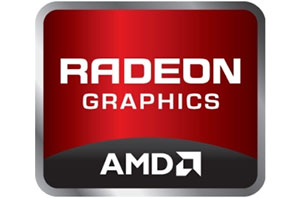
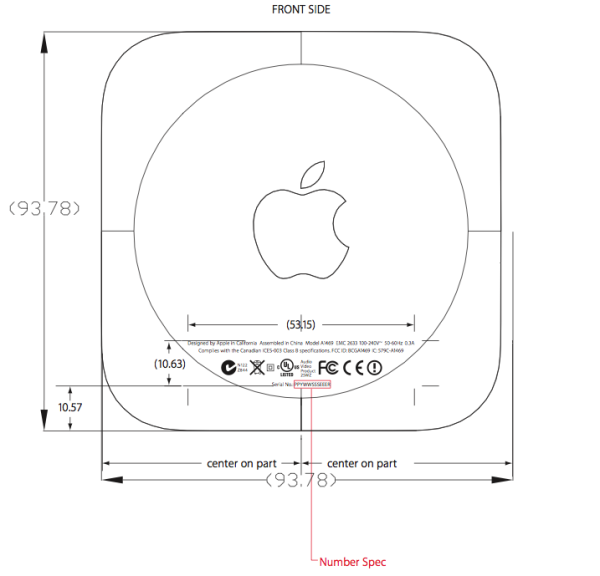
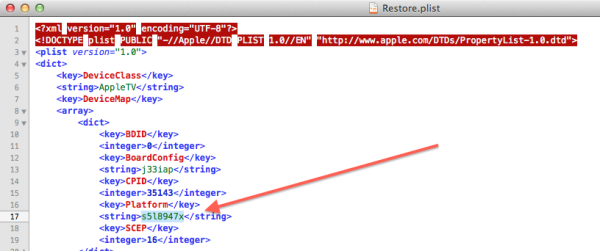
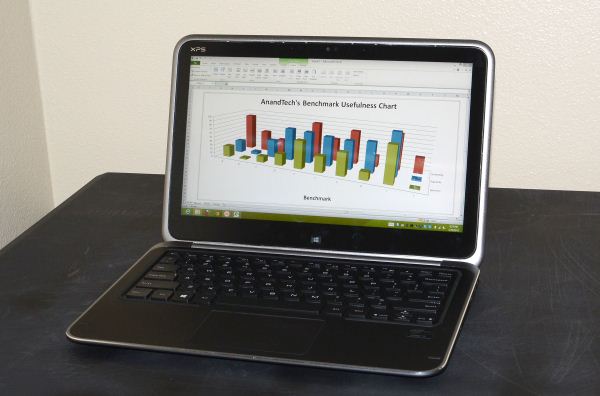
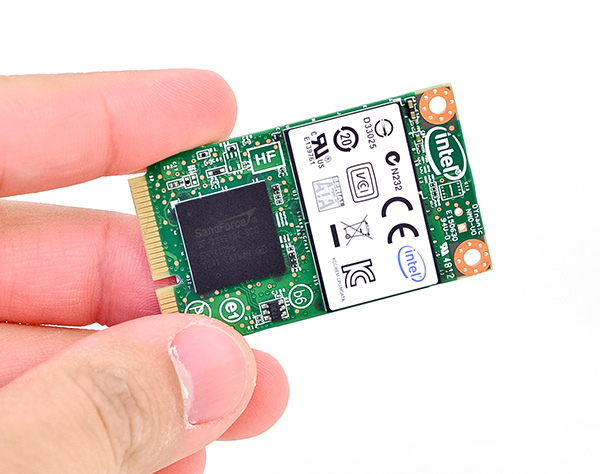
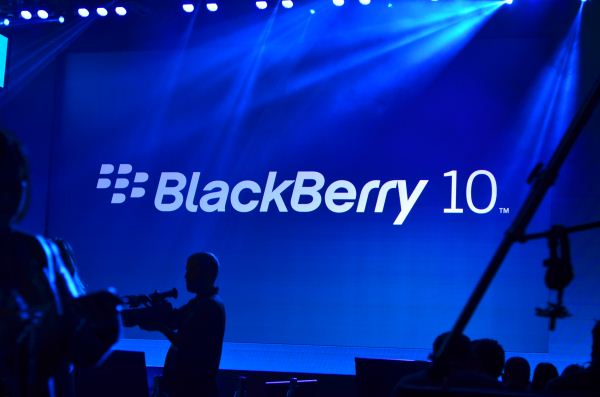


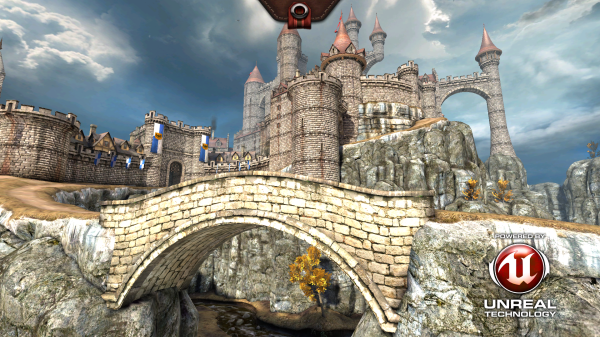

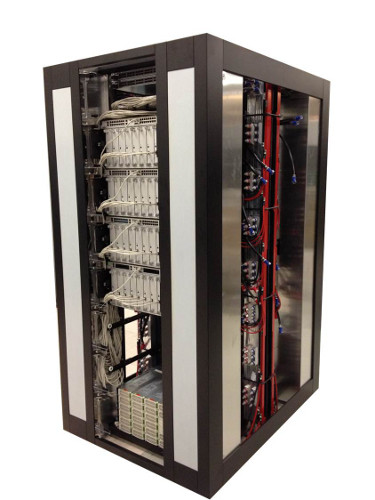
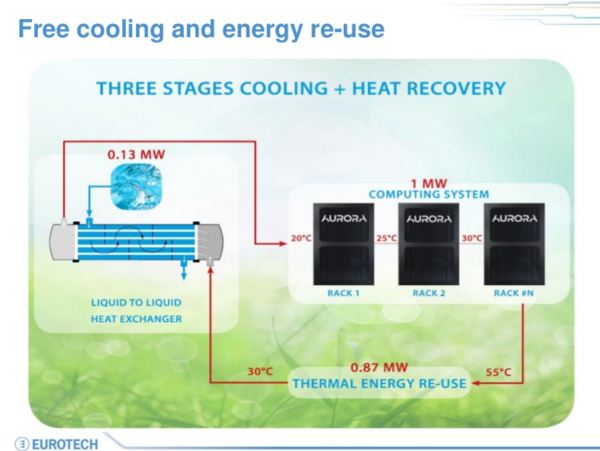
.jpg)
















Bookmarks